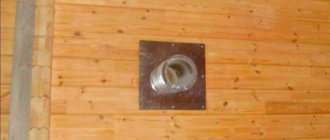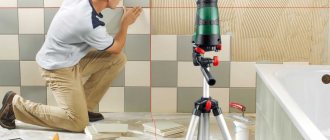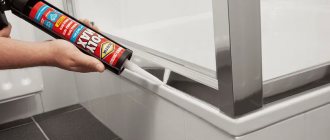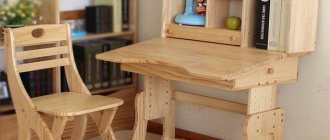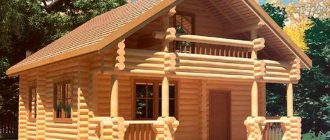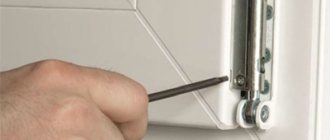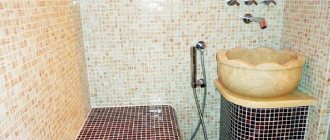There are no extra meters in the house: this is the golden rule of the science of interior design. Every day new ideas appear on how to literally equip a personal office, dressing room, greenhouse or bar out of nothing. And in this regard, the most valuable, spacious and cozy additional space is the attic.
Moreover, it is possible to transform almost any attic into a residential one, and the problem of lack of light and air can easily be solved by high-quality installation of a dormer window on gable walls or slopes. And it doesn’t matter exactly where you choose for this element and how many windows you want to install - such an “operation” is completely safe for the roof if you take into account all the recommendations of experts and ensure reliable waterproofing of the frames.
Let's study all the rules that relate to this process.
What is needed to install a window?
Installing a window in a metal roof requires certain skills, but can be done independently.
If you decide to turn your attic into an attic floor, you can insert several windows or one large one if the attic has a relatively small area. Windows will allow not only natural light to enter the room, but also to ventilate it. It is worth noting that they will be on a slope, so they will provide more light than ordinary windows. This should be taken into account when choosing the size of the structure. The tools that will be required for the job must be prepared in advance. You will need the following set of tools and materials:
- Wooden boards or beams.
- Waterproofing.
- Thermal insulation.
- Construction stapler and staples.
- Nails.
- Level.
- Several sheets of metal tiles, the same as those installed on your roof.
- Screwdriver or drill.
- Self-tapping screws.
- Metal scissors.
The advantage of a metal tile roof is that you do not need to make an additional frame to install the window, since it already exists. However, due to the small thickness of the sheets, care must be taken to ensure good hydro- and thermal insulation, and additional sheets will be required to close the sides of the window.
Before you begin installing a roof window in a metal tile , you need to determine the tasks that the window will have to perform. If the room is planned to be used as a bedroom, too bright lighting is not required, which means you should not install large or large windows. For an office, on the contrary, brighter lighting will be required, so the total window area should be larger. On average, ten meters of floor requires one meter of glazed surface; this ratio is considered optimal.
Windows on the attic floor are also needed for ventilation, otherwise it will not only be stuffy under the roof, but also the roofing pie will not last long, so at least one window must be opening. Dormer windows in a roof made of metal tiles are calculated in the same way as for any other type of roof, the differences will only be in the method of their installation.
Required Tools
Which method of opening the sash should I choose?
Considering that the roof window is mounted at an angle, it would be inconvenient to open it in the usual way. And there is always the possibility of accidentally hitting yourself with an open door. To make the process more convenient, manufacturers offer the following opening options:
- Central axis of rotation. This mechanism is considered universal and is suitable for standard roofs, the angle of inclination of which ranges from 15 to 90 degrees. In this case, the handle is located on top, and in some models it is also responsible for controlling the ventilation valve;
- Raised pivot axis. This mechanism works on the same principle as the previous one - the sash rotates around its axis in both directions almost 180 degrees. Only the axis in this case is slightly shifted upward, by about ¾ of the height. This allows you to make the lower clearance higher;
- Combined axis. It implies the possibility of both turning the sash around its central axis, which makes it easier to wash the window, and only lifting the sash up. In this case, the window rises outward and forms an angle of no more than 45 degrees. This design makes it possible to ventilate the room and reach all corners of the glass unit to wash it, but at the same time, when open, it allows less dust into the room due to the lack of clearance at the top of the sash;
- Lateral axis. In this case, the window opens outward like a regular hinged one. The sash is fixed in the selected position by a special shutter located on top of the frame;
- Smart window or remote controlled window. This is an indispensable design in cases where the windows will be installed very high. You can adjust the window opening by simply pressing a button on the remote control. More expensive windows are equipped with a rain sensor, which allows you to instantly close the window when the first drops fall on its surface without your participation. The built-in sensor is responsible for this. By the way, from the remote control you can control not only the opening of the shutter itself, but also the raising/lowering of blinds, roller shutters and even some types of curtains.
In parallel with this question, many cannot decide where is better to place the window handle - at the top or bottom. In general, the location of this element completely depends on the design of the window. Both provisions have both advantages and disadvantages. Pros of the top location:
- Considering that the handle is at a height of 1.85-2.2 meters, opening the window by small children is completely excluded. Which, of course, is about safety.
Flaws:
- This arrangement is inconvenient if you are below average height. To reach it you will have to stand on your toes or even use a stool;
- It will also be necessary to bend decently in order to look out the sash of an open classic window.
Regarding the lower position of the handle:
- The advantages include the convenience of opening the window for people with a small frame.
Flaws:
- Children can reach the handle; If there are flower pots or other objects on the windowsill, there is a chance that they will constantly fall when opening/closing.
Selecting a window and installation location
The size of the window is chosen taking into account the distance between the rafters and the area of the attic (for more details: “Design and dimensions of attic windows”). It is best to install it between the rafters without changing the design. Installing a roof window in a metal tile requires special attention to choosing the location of the future skylight. Sufficient lighting can only be achieved if the window occupies at least 10% of the room area - a good option is shown in the photo. The width of the window should be 4-6 centimeters less than the gap between the rafters. If the rafters are located close to each other, and the window space should be large, you can install two windows side by side, in adjacent niches between the rafters. So closely spaced rafters are not a problem, and two windows provide better illumination than one, even a large one.
The choice of height at which it will be located depends on the angle of inclination of the slope and the location of the fittings on it. On flat roofs it is better to place them at the top, and on steep roofs - at the bottom. The optimal height at which windows should be installed in the attic is 80-130 centimeters. If the window handle is at the bottom, it is installed at a height of 120-130 centimeters, if at the top, then at a height of approximately 100-110 centimeters. Its location is also influenced by the type of roofing material. For example, ceramic tiles cannot be trimmed and windows must be placed on top of the row of tiles. If sheet material was used, then a hole can be cut in it absolutely anywhere.
To prevent icing, glass fogging, and condensation to accumulate, it is necessary to insulate the attic windows. For this purpose, a heater is placed under them.
The method of opening a window in the attic can be chosen based on personal preference and convenience. Particular attention should be paid to the window frame. Although all attic windows look approximately the same, each manufacturer has its own characteristics. Contents may also vary. Accessories, including curtains for attic windows, should be selected from one line of one manufacturer, and it does not hurt to consult with a company employee to be sure that you will get a complete set.
After the windows have been selected, the issue of their location has been decided; they need to be designated from the inside of the attic.
Main structural elements
The design of a roof window, in particular its fittings, is a very complex mechanism, reminiscent of the locking system of a full-fledged plastic window. However, there are also distinctive points:
- The frame of a roof window can be made of two materials - laminated veneer lumber or plastic. If we are talking about wood, then coniferous species are used, in most cases we are talking about pine. The wooden frame is necessarily impregnated with special antiseptics, which prevent the formation of mold and various insects, and then covered with several layers of varnish. This protects the surface from moisture. But if these measures are sufficient for indoor use, then for the external part of the structure such protection will not be enough. Therefore, to protect against precipitation and atmospheric influences, the wood is covered with special overlays. In most cases, they are made of metal, namely aluminum, which is lightweight. To prevent metal corrosion, polymer paint or other protective composition is applied to its surface, depending on the manufacturer;
- Ventilation valve may or may not be included in the design. It all depends on its cost. But experts recommend not to neglect this function. In addition to allowing you to ventilate the window without opening the shutters, the valve will prevent the formation of condensation. And some note a longer service life. This is due to the fact that when the sash is opened for ventilation, a very large load is placed on the fittings. After all, the weight of the sash must be supported all this time;
- Double-glazed window Dormer windows are often single-chamber. This is justified by its low weight. But the question of thermal efficiency remains. And as you know, single-chamber double-glazed windows have very large heat losses. To make the glazing warm, in this case energy-efficient glass is used. The space between the two glasses is filled with an inert gas such as argon. In addition, a simple but effective technology is used "warm perimeter" — a steel frame is located around the perimeter of the window. It is solid, which prevents the formation of cold bridges. Such measures made it possible to create a double-glazed window, which in terms of its thermal efficiency is practically not inferior to a two-chamber one. Therefore, it can be used for installation in almost all regions of Russia. And for those who live in a very cold climate zone, there are windows with double-glazed windows and additional insulation. Another feature of roof windows is that their outer glass is almost always shockproof, that is, hardened, with a thickness of at least 4 mm. The inner glass can be either float glass or triplex glass. The latter option has a higher cost, but it is justified if there are small children in the house. Glass triplex consists of two thin glasses glued together, between which there is a transparent film. If the glass breaks accidentally, its fragments will remain on the film and will not cause harm. In addition, triplex provides higher noise insulation;
- Accessories is a very complex system. It includes a handle, hinges, and locking elements. Moreover, depending on the manufacturer, one window can have up to five locking points. Friction hinges are used, which allows you to rotate the opening part of the window around the rotation axis by almost 180 degrees and fix the sash in the selected inclined position. Thanks to this feature, caring for the outside surface of the window is greatly simplified. In addition to this, the process ventilation rooms with attic window is more thoughtful. The fact is that when the sash is turned, it acts as a separator. Warm air flows out of the room above it, and cold air from outside enters under the door. Air flows of different temperatures do not touch or mix, which allows ventilation to be carried out more efficiently and in a shorter time;
- We said that the outer part of the frame is protected by special pads. In addition, there is an element that is also responsible for draining water from the window. It is called salary and is also made of aluminum, which is suitable for almost all types of roofing. Exception is only a copper roof. In this case, in order to protect both materials from destruction under the influence of the electrical couple that is formed when they come into contact, the frame is also made of copper. In addition, the flashing also provides fastening of the frame to the roof.
The configuration of the flashing can be of two types - smooth or wavy. The determining factor when choosing is the roofing material and its configuration. Smooth frames are used when installing windows on a roof covered with tin, copper and other materials without relief. Wavy flashings are selected for roofing made of metal tiles, slate, profiled sheets, and ondulin. The profile of the flashing must clearly follow the contours of the facing material in order to ensure a tight fit, minimal protrusion of the window relative to the roof plane, thereby reducing heat loss and generally making installation possible. Therefore, flashings have standard parameters focused on standard roofing coverings:
- For nasty coatings – the wave magnitude is 0;
- For installation on soft bitumen shingles – wave size up to 8 mm;
- For roofing materials with a wave size of 16 mm;
- For roofing materials with wave sizes up to 30 mm;
- For roofing materials with wavelengths over 30 mm;
Preparing the site
As for how to properly install a roof window, it is better to do this before finishing the interior of the room. The roof may already be ready. First, from the inside of the room, they mark on the waterproofing film where the window will be located. The distance on the sides from the rafters on the right and left should be 4-6 centimeters. Install the window on the lower mounting beam or rafters. Then mark the lower border of the window, retreating 4-6 centimeters for flat roofing materials and 9 for profiled ones. Then mark the top point, putting another 9-15 centimeters on top.
When cutting out waterproofing material, leave a margin of 20 centimeters on all sides. The rest of the linen is wrapped inside the room. The roof covering is removed or cut out, and, stepping back 2 centimeters from the rafters, the sheathing is cut off.
Before installing the roof window, a mounting beam with a thickness of 50 mm is nailed down below; the distance to the sheathing should be 8-10 cm. Using a level, the beam is set strictly horizontally. The lower edge of the waterproofing is attached to the mounting beam with a stapler, and the upper edge is attached to the sheathing above. The side edges are pulled outward.
Getting started, tools
If you want to install roof windows, DIY installation is quite possible. You will have to act according to the instructions:
- First of all, you need to prepare the window opening, then install the frame.
- Provide hydro- and thermal insulation.
- Build a drainage system.
- Set salary.
- Insert the glass unit.
- Install a vapor barrier.
- Install slopes.
To carry out the work you will need to have the following tools:
- Screwdriver or small drill.
- Set of self-tapping screws, nails.
- Beams and wooden slats.
- Building level.
- A circular saw.
- Insulation materials.
Frame installation and alignment
The delivery set indicates how the roof windows should be installed - instructions are provided by the manufacturer. It must be followed, since the products of different manufacturing companies differ. For example, the brackets can be rectangular and attached only to the rafters, or coal, which are mounted both to the sheathing and to the rafters, and they are also fixed to the window frame in different positions (for more details: “Installation and installation of roof windows in the roof - sequence of work "). Thus, although the installation of windows from different manufacturers is similar in general terms, it has its own characteristics.
For ease of installation, it is better to remove the sash. How to do this is written in the instructions. If there is a frame on the window, it is also removed. The result is a bare frame.
Mounting brackets are installed on it in the places intended for this. Then you need to perform thermal insulation. Before you insulate your attic window, you need to purchase mineral wool. Thermal insulation material is placed on the top of the frame and secured with a stapler. At the bottom of the window, the thermal insulation is placed on the mounting beam, and then the frame is installed in the opening and the insulation is pressed against it.
Window size calculation
This calculation takes into account the angle of inclination of the slope, the distance between the rafters, and the requirements for natural lighting in the attic. The roof window is built into the inclined plane of the roof so that:
- there was a distance of 80-90 cm between the finished floor and the lower edge of the frame;
- There was a distance of no more than 200 cm between the finished floor and the upper edge of the frame.
The width of the opening is selected arbitrarily, according to the requirements for the total glazing area. In this case, the distance between the rafter beams is taken into account. If the supporting structures of the roof are already ready, the width of the opening should not exceed it. If it is important that the window is wide (panoramic), at the stage of arranging the rafter system, the rafter beams are installed at the required distance at the installation site.
Creating waterproofing around a window
The roof window kit includes a waterproofing apron. The finishing of roof windows must necessarily include waterproofing, since they are located under the window and are directly exposed to precipitation.
In the upper part of the future window, a sheathing equal to the width of the drainage gutter is cut out on both sides. The waterproofing in this place is cut in the middle. Then it is placed under the drainage gutter and installed in the gap between the sheathing. Thanks to this, water from above will flow from the waterproofing not into the window, but into the gutter.
Then the apron is unrolled and laid around the window so that it is protected from leaks. The apron is stapled to the mounting beam, frame, top sheathing and rafters. The edges are brought under the sheathing, and the upper part should be under the gutter. After this, the roofing material can be re-laid at the bottom of the window.
Installation of a roof window and its significance, watch the video:
Which material is better - plastic or wood?
When choosing the material for making a roof window, you should take into account the purpose of the room:
- So for children's rooms, living rooms, bedrooms or playrooms, it is better to choose wooden windows. They are of natural origin, aesthetic appearance and excellent performance characteristics;
- For rooms with high humidity, such as bathrooms or kitchens, it is better to give preference to plastic.
By and large, these materials are equally good and plastic windows can be installed with the same success in an attic equipped as a bedroom. The only advantage of plastic is a longer service life.
Salary setting
Installation of the flashing begins from the bottom up. First, install the lower corrugated apron, then the upper and side ones. At the very end they put covers on the window.
Flashings from different manufacturers have their own installation characteristics, so you need to follow the attached instructions. For example, some windows have a rubber seal on the frame, while others do not. The flashing can be wavy or flat; the choice depends on whether the roof windows are installed in flat or wavy metal tiles. All parts of the flashing are joined and attached to the sheathing and frame. The lower apron is attached to the roofing material from above. At the end of the work, a special element is attached to the flashing, to which the roofing material will fit tightly.
To seal the joints between the opening and the frame, you can use only special sealants, and not polyurethane foam. After hanging the sashes, remove the protective covering from the window. Installation of roof window slopes must be done indoors. The lower slope is made vertical, and the upper slope is made horizontal. It is this arrangement that promotes the best air circulation.
If the installation was carried out correctly, repairs to the roof windows will not be required soon, and their operation will be convenient.
Finishing work at the final stage
When the window structure is installed and the main installation work is completed, it is necessary to make slopes. The basic rule that must be followed at this stage is to position the upper slope in a vertical plane, and the lower slope in a horizontal plane. With such an installation, the side planes of these structural elements have the shape of a triangle or trapezoid.
Slopes will add completeness to the window space Source sjaartje.nl
This arrangement promotes the natural circulation of air flows, preventing the formation of condensation products on glass surfaces. The main material for making slopes is plasterboard or lining. Some models of plastic windows are equipped with factory-made slopes made of hard plastic, which are easy to install and require minimal maintenance.
Features of installing a window in a metal roof
Metal tiles are a very well-known roofing option, as they have high wear resistance, mechanical strength, and a very attractive appearance. There are usually no design difficulties; on the contrary, metal tiles make installation somewhat easier.
Installing a window in a metal tile has some features:
- The great advantage of this solution is that for installation there is no need to build an additional frame, since it is installed under metal tiles by default;
- a prerequisite for installation is thorough hydro- and thermal insulation, the window structure is located at an angle and not vertically, accordingly, the risk of leakage increases many times;
- in order to close the attic structure on the sides, additional sheets of material will be needed, but such consumption is small;
- install the window only between the rafters, the width of the opening under it should be 8–12 cm less than the distance between the rafter legs, and if it is smaller, then the width of the sash is also selected smaller;
- The nature of the roofing material does not affect the placement of the window structure; the usual recommendations apply here: on steep metal roofs, openings are cut out in the lower part, on flat roofs - in the upper part.
Important! Of several attic windows, at least one must be opened for ventilation, otherwise the room will be stuffy and moisture will accumulate in the roofing pie.
Secrets of installing a condensate drain
The most important element of the roof window waterproofing system is a metal gutter for draining condensate.
The gutter is installed at a distance of up to 50 cm (optimally 20-30 cm) above the window in the same plane with the hydro- and windproof membrane.
To allow condensate to flow down the gutter, it is installed at an angle ( slope of at least 3 degrees ). Then the moisture will be removed to one of the sides (the ventilation duct formed by the sheathing).
Difficulties with installing a gutter arise if it needs to be mounted on a finished roof. In this case, you will have to manually cut out the openings in the sheathing, and do this carefully so as not to damage the wind protection film.
The easiest way to install a gutter is if the roof has not yet had sheathing installed, there is no base for flexible tiles and a soft roof has not been laid.
Preparing the site for gutter installation consists of the following steps:
- In the middle of the rafter leg (on both sides of the prepared opening) a vertical cut is made on the film of the superdiffusion membrane.
- A gutter is placed on the seat.
I lower the gutter, using it as a ruler, and make a horizontal cut in the film so as to align the vertical cuts.
The result is a windbreak valve that fits into the gutter and catches all the condensation.
Tools for installing roof windows in metal tiles
Installation requires the most common tools and accessories:
- drill and screwdriver;
- hammer, saw - manual or electric, preferably a hacksaw, you will also need a nail puller and a stapler;
- measuring instruments – level, marker, plumb line, tape measure;
- nails and screws;
- edged board with dimensions corresponding to the parameters of the rafter leg, it is used for additional support of the structure.
It is preferable to use softwood boards, as they are more resistant to rotting.
Which curtains to choose for a triangular window (video)
Custom windows are a great way to spruce up the overall look of your home. Such windows will be the highlight of any project and interior. Not only does it look nice, but it can also add functionality to your home. In order to highlight a window of a non-standard shape as much as possible, you need to sew the right curtain for it, so you need to take the choice of curtains with all responsibility, carefully select the color of the canvas and not forget about the material used, and then the rays of the sun breaking through the prism of the curtain will bring, in addition to warmth, and beauty.
Place of installation of the window structure for the attic, its parameters
The width of the product is 8–12 cm less than the rafter opening (the distance between the two rafter legs). If the rafters are installed with a sufficiently small step, you can install several windows, placing them in adjacent niches.
The installation height of a roof window will depend on the angle of inclination of the roof slope and the technology for opening/closing the window. On very steep roof slopes, it is better to install windows from below, on flat surfaces - from above. Window structures must also be installed at a height of 120–130 cm from the edge of the slope if the fittings are located below, 100–110 cm if the fittings are on top.
Types of attic window openings
Under a gable roof, the simplest option would be a vertical window on the gable. Such openings provide partial illumination, the intensity depends on the direction of the world. The north side is completely useless in this regard. The advantage is that you can give it any shape: trapezoid, square, rectangle or circle. Inclined ones provide illumination all day long, but with minimal visibility. Fans of stargazing will be pleased with this review.
If the roof structure allows, vertical openings are combined with inclined ones. A panoramic effect is created, visually increasing the size of the room.
Roof window openings are also made recessed or protruding. The frame is mounted vertically in both cases, in the second - only at the main construction stage. This architectural solution functions more like a dormer window than a light source.
In this article we will talk about inclined windows built into the roof. They provide the maximum percentage of illumination, although they are not very aesthetically pleasing from the outside.
Frames and sashes are made from aluminum, composite material, wood of various species, and also with its coating. Wooden ones are suitable for bedrooms, living rooms, and children's rooms. For the kitchen and bathroom you need a frame made of moisture-resistant material.
Manufacturers are not limited to square and rectangular shapes, but non-standard (for example, arched) structures require special installation technology. This significantly increases their cost.
According to the opening methods, choose the central, lateral control axis or a combination of both.
Preparing to install a roof window in a metal tile
Installing a roof window in a metal tile as in the video requires preparation. The structure cannot be installed while the roof is being constructed. All work is carried out after installing the roofing pie and laying the metal tiles, but before finishing the attic.
- First of all, they determine the number of windows and their location. If the attic is used as a bedroom, a couple of openings will be enough; if it is used as a study, you should make them larger. The placement is determined by the steepness of the slope. In any case, you can install a window on a metal tile only between the rafters.
- The future opening is marked with a marker in the selected area, departing from the rafter leg by 4, or preferably 6 cm. The height of the opening is limited by the method of opening the attic window.
- Stepping back another 20 cm from the marked line, cut through the roofing pie to the metal tiles and remove the material. The resulting margin of 20 cm is the basis for waterproofing under metal tiles.
- Then the metal tiles are cut through. If it is difficult to immediately use a saw or hacksaw, it is allowed to make an initial cut with a grinder, but no more than 10 cm long. Then scissors, a hacksaw, and a saw are inserted into the cut and the material is cut along the contour of the opening. It is recommended to paint the cut area later.
- A support beam is cut from the board with a length equal to the distance between the rafters, but taking into account a gap of 8–10 cm. The beam is secured with screws in the upper and lower parts of the opening. The box is leveled using a slope; only when the bars take a strictly horizontal shape is rigid fixation of the screws allowed. Then the bottom edge of the waterproofing is secured to the boards with a stapler.
Important! Many experts advise finally fixing the screws after the window frame is fixed and centered.
How to install and adjust the frame?
Before inserting a roof window , you need to remove the double-glazed window. This will not only make the task easier, since without it the frame weighs much less, but will also make the work safer. The glass unit is inserted after all work is completed. To begin with, fix the brackets located in the delicate part of the structure. They need to be secured securely, but the top ones should not be completely tightened. They should hold, but be relaxed: this is necessary so that the frame can be adjusted.
You will need a building level: use it to measure the inserted frame. If it is skewed, it is leveled using plastic corners, which are sold complete with the window. Once you are sure that the frame is level, the screws of all fastenings can be tightened completely.
How to properly install a roof window on a metal tile
Installation of products is carried out in the same way, regardless of the manufacturer, the slope of the roof or the size of the window opening. Therefore, for example, installing fakro windows in metal tiles is carried out according to the same scheme as attaching homemade wooden frames.
- The installation begins by disassembling the attic window: the sash is removed from the frame, and a piece of insulation - mineral wool - is fixed to the upper element of the structure with a stapler. The same cut for the lower fragment of the attic window is attached directly to the support beam.
- The frame is placed in the opening so that its edges rest against the mounting beam. Fastening is carried out with self-tapping screws of the appropriate length and diameter. Screw the fasteners into special mounting holes. The instructions for the product, as a rule, describe all the installation details.
- The upper frame brackets are not fixed very rigidly. Then check the frame for verticality and horizontality. After this, the thermal insulation on the mounting beam is secured to the opening with a stapler. Install the roof window sash and check how easily and freely it opens. Eliminate detected distortions and adjust the position of the frame until all defects are eliminated. Only after this are the window brackets and mounting beam finally fixed.
- It is recommended to lay and fix thermal insulation in the space between the window frame and rafters, since the remaining thermal insulation of the roof may not be enough. The insulation is nailed to the window frame.
- The attic door needs to be waterproofed from the outside. To do this, remove part of the sheathing from above the opening in order to secure the drainage gutter in this place. Roof waterproofing should be installed under it. In the future, water that drains from the roof will be drained through a gutter away from the window.
- A corrugated waterproofing apron is fixed around the frame. First, attach its lower part, then the upper part under the gutter, and then the side elements. The apron is secured to the sheathing and frame with a stapler. To waterproof the gaps between the opening and the window, roofing sealants are used.
- If the metal tiles were cut during installation using the method described above, then the last step is to fill the strips around the window with the material. As a rule, the remains of tiles are enough for this. In some cases, the space is covered with strips of galvanized steel, painted in the appropriate color. If the metal tiles were dismantled, then the roof is assembled using the usual method. This will require trimming the shingles.
- After the roof has been restored, the flashing is fixed at the bottom and sides of the window structure. This is almost an analogue of an apron, but only installed on top of metal tiles. It is mounted using the same technology, secured to the frame and sheathing with a stapler.
When finishing the attic space, slopes are installed. The lower slope is made vertical so that it is perpendicular to the floor, and the upper slope is horizontal. This ensures proper air circulation.
How to install a roof window in metal tiles is demonstrated in the video.
Preparing the opening
- Initially, the outline of the window is marked on the waterproofing coating using a marker. In this case, it is necessary to take into account the indentations from the rafter legs. Next, you need to step back 20 cm from the marked contours inward on each side. You can make a cutout (the remaining 20 cm of material is folded into the attic).
- The next stage is to cut out an opening for the window in the roofing using a grinder.
Installation of mounting beam
To make timber, take a similar board from which the rafters are made. The product is fastened under the window opening between the rafters; a gap of 8–10 cm is left between the sheathing and timber.
Important! The mounting beam is positioned strictly horizontally.
Frame installation
The frame is installed without frame or sash. Mineral wool insulation is nailed onto the frame on top. The thermal insulation material of the lower part of the frame is attached to the mounting beam. After this, the frame is inserted into the prepared window opening.
Recommendation: When installing the frame, the upper brackets should be left slightly loose. This will allow you to correct its position in the future.
Sash installation
Installation/disassembly of the window sash is carried out according to the product manufacturer's instructions.
After installing the sash from the opening, the structure is insulated on both sides, and excess materials are removed.
Installation of external waterproofing
A drainage gutter is installed on top of the window structure, under which the upper part of the waterproofing apron is placed (included in the product package). The edges of the apron are brought into the room, attached to the sheathing, rafters, and mounting beam.
The final stage of installation is to restore the roof covering under the attic window.
Installation of double-glazed windows into the frame
At this point, you need to refer to the user manual from the window manufacturer. Different models of roof windows have their own nuances during assembly. Therefore, you should carefully read the instructions and carry out installation, adhering to the manufacturer’s recommendations. In addition to installing the window into the frame, they describe in detail how to adjust the position of the glass unit. Using special screws, you can achieve the desired pressure of the glass to the frame and set summer or winter ventilation modes.
Interior decoration
It is important not only to install the roof window correctly, but also to complete the appropriate finishing. If you do not make the lining and do not properly insulate it from the inside, the window may be cold, condensation will begin to form in the room, and the heat will go outside. To combat these phenomena, sealant, insulation and cladding are used; which one to choose is a personal matter for the owner of the premises.
Quite often, the manufacturer offers plastic parts along with the window. This is an inexpensive and simple way to solve the problem. Plastic curtain rods will cover the joints, give the interior a finished look, and prevent drafts from entering the room. You can use drywall and lining for the same purpose.
Finishing and insulation of the attic window
Installation of a roof window in a soft roof
Soft roofing consists of a synthetic waterproof coating that is easy to process and cut. With the help of a sharp knife and saw you can cope with all operations on arranging a window opening. Installation of the support rails is carried out using a conventional screwdriver and self-tapping screws. Therefore, it is believed that installing a roof window on a soft roof does not require high qualifications. All you need is care and precision in following the instructions described in the technical data sheet of the product.
Since each “petal” of the soft roof is glued to the skin of the slope, you need to stock up on glue for the installation of the roof window
Since a solid base is always laid under a soft roof, the hole must be cut with extreme precision. Technological gaps are kept minimal - 3–5 cm. If necessary, the structure is supplemented with support rails made of wood.
Video: installation of a roof window on a soft roof
As practice has shown, when installing a window yourself, mistakes are most often made in laying insulation and installing waterproofing. As a result, you have to completely disassemble the entire structure and eliminate flaws. After all, “punctures” are detected only when the window begins to accumulate condensation or leak.
APF pleated curtain
| The APF curtain uses 25mm wide pleated material with an additional coating that provides room darkening. This model uses a completely new control system: the curtain can be moved along the height of the window using the top and/or bottom bar (top-down system) and fixed in any convenient position. APF aluminum curtain rails are available in two colors - lacquered (white) and anodized (silver). A telescopic rod ZST is used to control the high-mounted curtain. Read more… |
Tips and tricks
Inserting a window into a metal tile is a fairly simple job. But you must follow certain rules:
- You need to cut metal tiles with a hand or mechanical tool; it is not recommended to use a grinder with a disk: the high speed of rotation of the disk causes the protective layer of the metal tile to burn out, which reduces its properties;
- the material of the timber must match the material of the rafter legs;
- for insulation it is better to use mineral or basalt wool rather than polystyrene foam, since they are non-flammable materials;
- the window is installed in accordance with the instructions offered by the manufacturer; the latter, as a rule, provides both the required fasteners and the necessary tools for fixation and adjustment;
- it is very important to finally fasten both the mounting box and the window frame only after adjustment; later it will not be possible to change the position of the frame or sash;
- It is recommended to purchase an apron for waterproofing from those options offered by the manufacturer of the metal-plastic structure; not all models are suitable for each other;
- It is also recommended to insulate the slopes after installation; in this case, foam plastic can be used, but mineral wool is still considered the best option;
- All gaps are very carefully sealed with waterproof sealant; neglecting this recommendation can lead to leakage.
Installation of roof windows can be done at any time. If it becomes necessary to increase the number of windows later, this is quite possible.
Choosing the right style
The owner of the house and apartment independently chooses the stylistic direction in which the attic room will be decorated. But, there are a number of options that designers use most often. Their choice is related to the characteristics of the attic spaces and the possibilities for their comfortable arrangement.
Among the styles that are optimal for decorating an attic are:
- Provence . It is characterized by artificially aged furniture, bleached wood and delicate summer colors: a combination of green, lemon, blue, lavender shades.
Bedroom in Provence style Source lavandadecor.ru
- Country is a style similar to Provence, only in the American style. It is distinguished by the choice of rough wooden furniture, checkered fabrics, and cowboy paraphernalia.
- Alpine chalet . The style is perfect for decorating a fireplace or living room. The main attributes are a fireplace, soft leather furniture, wooden ceiling beams, and a lot of additional decor.
- Loft is a popular modern style in which the interior decoration is made of brickwork, gray concrete, communications are not hidden.
- Modern modern with characteristic functionality, practicality, simplicity, a combination of pastel and dark shades.
- High-tech - the presence of chrome and glass parts in the interior, strict forms, monotony, strict minimalism.
General rules for installing Velux GZR/GLR/GLP roof windows
- The slope of the slope is from 15° to 90°.
- The recommended distance from the floor to the top bar of the window frame is 185-220 cm.
- Metal fasteners are screwed to the upper and lower frame bars from the outside at a distance of 10.3 cm from the corners. The length of the screws is 13-30 mm (depending on the model).
- Additional accessories are used taking into account the characteristics of the roofing.
- For flat materials (bitumen shingles, roofing tiles), aluminum waterproof ESR flashing is used. The permissible thickness of the roof covering is 1.6 cm.
- For profiled materials (metal, ceramic, composite tiles, corrugated sheets), waterproof aluminum flashing EWR is used. The permissible profile height is 12 cm.
- Combined installation of window units (vertical or horizontal) is carried out using flashings EWK and ESK.
- If, due to the specifics of the roof, the finished flashing cannot be installed, ZWR overlays are used.
- For aesthetic internal finishing of slopes, metal guides (LSG) or plastic elements (LSC) are installed.
- Optimal vapor barrier of the structure is ensured using a BBX apron.
- A reliable solution for hydro- and thermal insulation of the junction of the window frame and the roof covering is the BDX and BFX kits, which include a thermal insulation contour and a corrugated apron with a drainage gutter.
Pleated curtain APS new line
| A pleated curtain is an elegant, decorative barrier to sunlight that creates original lighting effects. Through the curtain, soft diffused light enters the room, providing visual comfort and coziness. The main difference from the previous APS model is a fundamentally new control system: the curtain can be moved along the height of the window using the upper and/or lower bar (top-down system) and fixed in any convenient position. The updated model uses pleated material 20 mm wide. Aluminum guides are available in two colors: lacquered (white) and anodized (silver). Read more… |
Procedure for installing Velux windows
- Pull the sash out of the frame.
- Install the corner mounts on the frame.
- Prepare an opening of the required size in the roof.
- Install a waterproof flashing.
- Fix the frame.
- Insert the sash into the frame.
- Install and adjust fittings.
- Lay the hydro-thermal insulation kit on the outside of the slope.
AMS - mosquito net
| AMS mosquito net is a fiberglass mesh equipped with aluminum guides. Mounted on window slopes from inside the room. When the window is open, the mesh prevents insects from entering the attic, thereby protecting it. Mosquito nets are always available in FAKRO warehouses. Peculiarities:
|
Curtain models
To choose curtains for the attic, it is important to take into account the purpose of the room. As a rule, the second floor of the house is given over to personal needs - bedrooms, children's rooms, recreation rooms
This requires curtains to be a good shield from bright daylight, comfortable to perceive, and calm in color.
Details:
Curtains. They look most advantageous on gable windows, since parallels are maintained, and curtains for the attic window do not need to be supported by special structures. This, however, does not exclude their position on inclined surfaces. Multi-layering is appropriate - light-colored tulle will absorb heat when needed or diffuse light, dense contrasting fabric of the second layer will darken the bedroom.
Special cornices frame an arched or trapezoidal window with beveled corners. Pitched windows are complemented by a low holder located half a meter from the floor. It must be decorative, as it remains open. Thus, curtains for attic windows get a completely standard look and fabric options are easy to choose.
Blinds
Blinds. It is appropriate to design in classic monochromatic versions in new, modern attic styles - kitsch, hi-tech, minimalism. They are also quite suitable for country if they are made from environmentally friendly materials or are a woven version with an ethnic print. They are convenient in their position - they do not hang down, they are selected according to the size of the window, they perform numerous functions, and are easy to use.
Also, blinds for attic windows can be external - roller shutters, rain blinds. They do not have a design for attic rooms, however, they perform a protective function when the owners are absent or during bad weather - hail, strong winds. Designs are selected that contrast with the facade or match it.
Roller blinds. The most suitable option for openings installed in roof slopes. Blinds for attic windows lack formality. The decorative effect is confirmed by the use of such options for living rooms, halls, and dining rooms. Ease of installation makes decoration quick, and the rich palette meets even the discerning taste of the owners. However, roller blinds are difficult to care for - they do not tolerate high air humidity and washing. Clean them dry.
Roman curtains in an attic bedroom should be thick fabric, dark in color or texture that does not allow the rays of the sun to pass through. They are used, as a rule, specifically for darkening. This does not exclude multi-layering - the second and third tier can be cornice curtains. On a clear day, the roll rolls up and the opening remains decorated, not empty. The decor of curtains on a roller shaft, even with a single-color fabric, performs an opening and closing mechanism. These are chains, twisted cords or rings.
Pleated. A variety of roller shutters and blinds. The difference is in the drape of the fabric. When folded, it resembles a small accordion with large folds. Curtains for an attic in a wooden house are made in natural motifs, and for an object made of stone or brick - they are simple, laconic and monochromatic.
Pleated curtains are popular as a day-night system. Two canvases are lowered onto the windows according to the time of day. Reflective material is even made from metallized fabric to enhance the dispersion of rays. Easy to control using a cord or chain.
Curtains will complement the interior of any room, be it an attic or a living room. But they can also easily ruin it if you approach the choice irresponsibly and hastily.
Where can I get suitable window textiles?
Perhaps we will upset fans of budget options a little - so that it’s cheap and cheerful. In the case of such non-standard window openings, this option is practically excluded. Because it is impossible to purchase ready-made curtains for triangular windows: you must take into account the specific parameters of these same windows.
https://www.youtube.com/watch?v=L97xV22H0b0
Therefore, there are two options: order curtains from special studios that sew window kits (this can be quite expensive, but will ensure professional quality work), or sew them yourself if you have sufficient sewing skills. Although, a budget option is also possible: it is suitable if you decide not to emphasize the unusual shape of the window, but to disguise it. Then it’s enough to purchase a classic set of curtains and drapes, hang them from above on a regular straight cornice, choosing a combination of colors and textures that suits the design of the room. To completely hide the top, add a beautiful lambrequin to this set. You can also choose a Roman model: it will allow you to adjust the lighting and hide the angularity of the structure.
In this way, you can cover the shape of a triangular window by using double roller blinds and lightly draping them
However, most often the owners want to focus specifically on the originality of the shape of the window opening.
Advice: keep in mind that the windows themselves most likely will not be able to provide sufficient lighting due to their size. Therefore, firstly, you will need an additional lighting scenario, and secondly, it is preferable to choose curtains from light, light translucent materials that transmit maximum light.
Stylistic nuance
Quite often, residential buildings with similar window openings are built from wood, which leaves its mark on their decoration with textiles. The natural texture of wood is best emphasized by tulle “like grandma’s” - remember, this is how our grandmothers curtained their windows, which created a special rustic flavor. At the same time, naturally, the overall style of the room should obey this idea.
Curtains for triangular attic windows in a wooden house - “Like grandma’s”
What models are suitable for a triangular opening?
If you want to emphasize its unusual shape, then the classic version “does not fit here.” We are looking for others.
- Vertical blinds for triangular windows, and especially for sloping ones, are suitable for minimalist interiors;
- A rather expensive, but very effective model for such cases is pleated;
- The classic option here is only possible with the obligatory use of tiebacks that allow you to open and secure the curtains. At the same time, lambrequins, ruffles, fringe and other decorations are not prohibited, but should be used minimally so as not to unnecessarily distract attention from the window itself and not to overload the interior with accents.
Mounting features
So, you already understand that standard curtain rods are only suitable in one case: if you decide to hide the shape of the window. In other cases, you will have to fasten two cornices at an angle.
- If you want to hang a straight panel, without assembly, such a laconic window decoration can be attached using eyelets, securing the first rings on each side in the upper corner. Then the entire canvas will not slide down the slope;
- A similar method, but without cornices at all, is to fasten special metal point holders for eyelets in the wall along the line of the window opening at an equal distance and hang the canvas on them. In this case, the eyelets can be replaced with fabric loops or ties, if they fit into the interior.
- That same curtain at an angle, as well as the sliding curtains on the assembly, will have to be attached with Velcro tape, otherwise the drapery will not hold. In this case, instead of cornices, you will have to use wooden beams that are screwed to the wall. One side of the tape is attached to the bars, the other, soft, to the textile.
- A bold solution is to use ordinary straight cornices, which are fixed horizontally, but at different levels, following the bevel lines. Then there will be several curtain panels at once.
- For cases when it is necessary to prevent the penetration of light into the room as little as possible, the curtains are sewn quite laconic, and are pulled apart from the sides and secured with tiebacks, or thrown over special hooks or brackets.
- The brackets themselves can completely replace the cornice. Having secured them at the top and sides, the textiles are hung in the form of overhangs.
Tip: curtains that are gathered and secured crosswise at the base of the window look impressive on such a window.
Curtains for custom-shaped windows
In attics, windows are rarely rectangular or square. The dimensions of the frames are also not maintained here. But this is precisely what gives the rooms their individuality. Choosing curtains to match unusual frames is not easy.
Arches
A rare form of frames in attics, but very aesthetically pleasing. Arches create a sublime atmosphere. They also visually raise the ceilings. Usually a straight cornice is hung above the frames, and on it are classic curtains with a slight overlap in the middle. The curtains are grabbed from the sides to create a beautiful frame.
You can install curtains only on the lower part of the arch Source www.navolne.life
